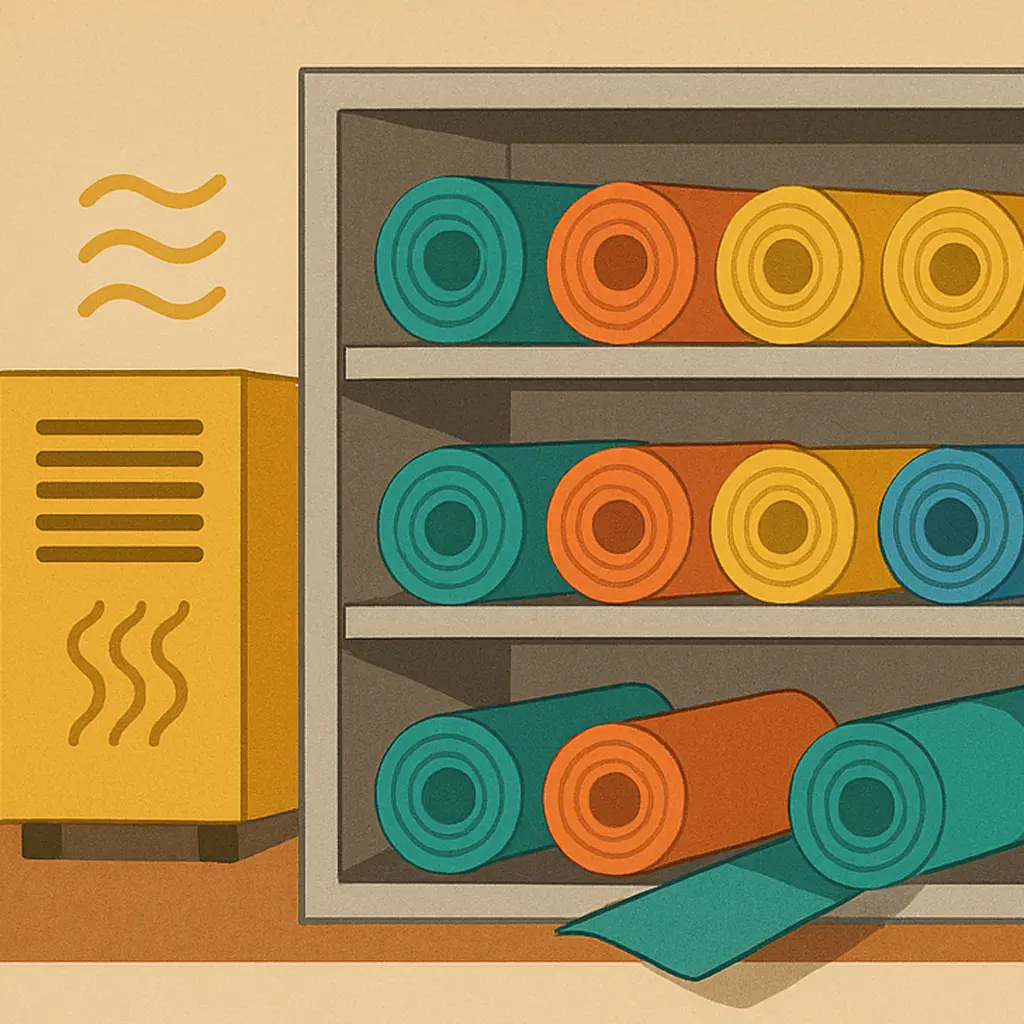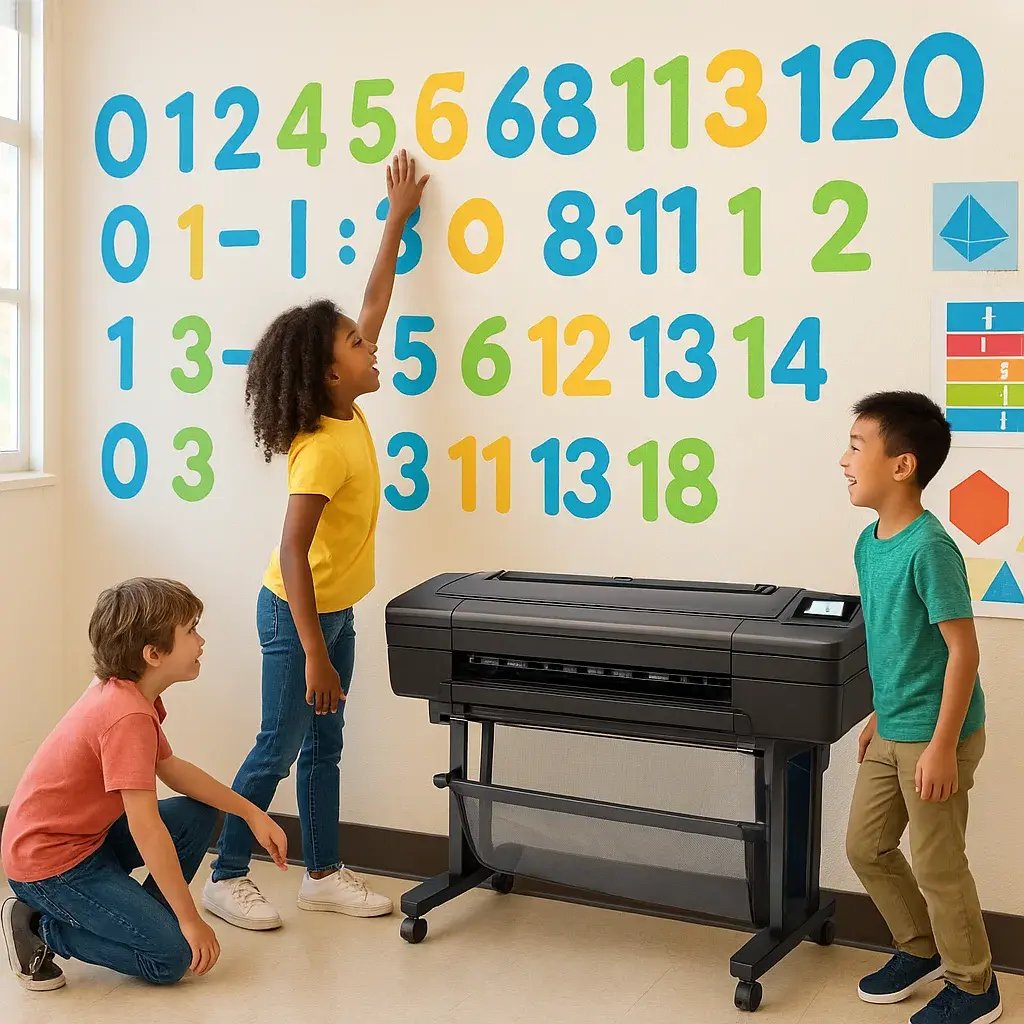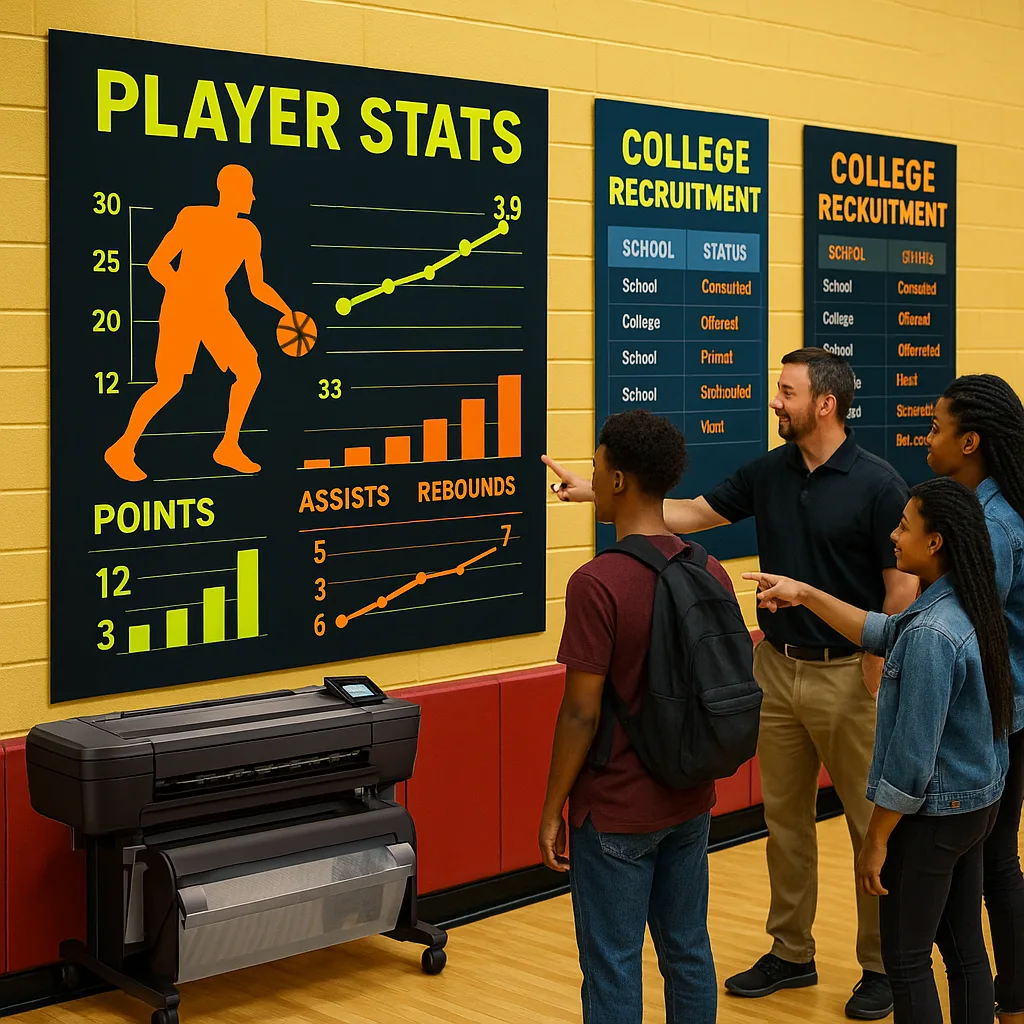
California educators know that maintaining high-quality poster materials requires more than just selecting the right paper—it demands strategic storage and handling practices aligned with our state’s diverse climate conditions. From coastal humidity in San Francisco to desert dryness in Riverside County, poster printing for teachers storage presents unique challenges that directly impact classroom visual resources and district budgets.
Why Proper Poster Paper Storage Matters for California Schools
According to the California Department of Education’s Facility Inspection Tool, schools must maintain materials in conditions that prevent deterioration. Poor storage practices can transform a $500 paper inventory into unusable waste within months. Furthermore, improperly stored materials affect print quality, leading to wasted ink, reprinting costs, and disrupted lesson plans.
Districts implementing systematic storage protocols report 40% reduction in material replacement costs and significantly improved print consistency throughout the academic year. These savings directly support instructional priorities while maintaining compliance with LCFF resource management expectations.
Understanding Poster Paper Types and Their Storage Requirements
Different poster papers require specific storage conditions to maintain their print-ready status. Here’s what California educators need to know about each type:
Coated Papers: Your Workhorse Materials
Coated poster papers feature protective chemical layers that enhance print clarity but require careful moisture control. Store these materials:
– Temperature: 65-75°F (critical for Central Valley schools with extreme temperature swings)
– Humidity: 45-55% relative humidity
– Position: Flat or loosely rolled with coated side out
– Protection: Original packaging until 24 hours before use
California’s coastal districts should invest in dehumidifiers for storage areas, while inland districts may need humidifiers during dry months.
Specialty Media Storage for Enhanced Learning Materials
Photo papers, vinyl materials, and canvas require stricter controls:
– Satin photo paper: Store vertically in original boxes, avoid pressure points
– Adhesive vinyls: Maintain below 70°F to prevent adhesive activation
– Canvas materials: Roll with print surface out, minimum 3-inch core diameter
– Outdoor banner materials: Stack flat with separator sheets between rolls
Schools using the Education Studio 36″ Duplicator Package often work with multiple media types, making organized storage systems essential for efficient poster production.
Poster Printing for Teachers Storage: Essential Setup Guidelines
Transform any classroom closet or supply room into a professional-grade storage facility with these California-tested strategies. Districts from San Diego to Sacramento have successfully implemented these systems, protecting thousands of dollars in poster materials while ensuring teachers have instant access to pristine supplies.
Creating Your Poster Paper Storage System
Whether you’re managing materials for a single Education Express 24″ Package or coordinating supplies across multiple campus print centers, these organizational principles apply:
Vertical Storage Solutions
Vertical storage prevents the weight-induced curling that plagues flat-stored papers. Implementation steps:
1. Install adjustable wire shelving (minimum 24″ deep for standard rolls)
2. Position dividers every 4-6 inches to prevent roll contact
3. Label each section with paper type, width, and receipt date
4. Rotate stock using “first in, first out” methodology
5. Keep frequently used papers at ergonomic heights (30-60″ from floor)
For schools with limited space, mobile vertical racks allow materials to move between classrooms and central print stations. This flexibility particularly benefits schools using portable desktop poster printers in multiple locations.
Horizontal Flat Files for Premium Materials
High-value papers deserve museum-quality care. Flat file storage prevents all forms of curling and maintains perfect flatness for critical projects. Consider these specifications:
– Drawer depth: Minimum 2″ for 50-sheet capacity
– Interior dimensions: Match your largest paper size plus 2″ margin
– Drawer lining: Acid-free barrier paper changed annually
– Weight distribution: Heavier stocks in lower drawers
– Security: Lockable for expensive specialty media
California’s earthquake-prone regions should secure flat files to walls and include drawer latches to prevent materials from sliding during seismic events.
Environmental Control Strategies for California Climates
California’s diverse microclimates—from foggy coastal areas to arid deserts—demand localized environmental control strategies. The California Energy Commission’s Title 24 standards provide baseline requirements, but poster storage areas need additional considerations.
Humidity Management
Maintain 45-55% relative humidity year-round using:
– Hygrometers: Digital models with data logging for compliance documentation
– Dehumidifiers: Essential for coastal districts (San Francisco, Los Angeles, San Diego)
– Humidifiers: Critical for inland valleys during fire season
– Silica gel packets: Supplemental protection in closed storage units
Monitor daily during seasonal transitions when California’s weather patterns shift dramatically. Paper stored at incorrect humidity levels can gain or lose up to 10% moisture content, causing permanent warping.
Temperature Stability
Temperature fluctuations cause expansion and contraction, leading to curling and brittleness. Implement these controls:
– Maintain 68-72°F consistently (aligns with classroom comfort standards)
– Avoid storage near exterior walls, windows, or HVAC vents
– Install temperature logging devices for Title I compliance reporting
– Consider insulated storage cabinets for unconditioned spaces
Schools operating the Education Studio 44 Poster Maker should maintain consistent conditions between storage and printing areas to prevent condensation during material transfer.
Handling Techniques That Preserve Quality
Even the best poster printer for schools cannot compensate for paper damaged by improper handling. Train all staff and student helpers in these evidence-based techniques:
The Two-Hand Rule
Always support paper with both hands, distributing weight evenly. For rolls:
1. Grasp ends firmly, avoiding center pressure
2. Lift vertically before moving horizontally
3. Set down gently, never drop or toss
4. Use roll stands for materials over 36″ wide
5. Employ team lifting for 50+ pound rolls
This technique prevents core crushing and edge damage that leads to printer jams and waste.
Clean Hands Protocol
Oils and contaminants from hands create print defects and degradation. Establish these procedures:
– Wash hands before handling any poster materials
– Use powder-free nitrile gloves for photo papers
– Keep hand sanitizer away from paper surfaces (alcohol causes spotting)
– Handle papers by edges whenever possible
– Clean work surfaces with microfiber cloths before paper contact
Schools report 60% fewer reprints when implementing consistent clean hands protocols.
Loading and Unloading Best Practices
Proper loading maximizes the capabilities of your poster printing equipment while preserving materials:
Pre-Loading Preparation:
– Acclimate paper to printer room temperature (minimum 4 hours)
– Check for visible damage, moisture, or contamination
– Verify paper orientation matches printer requirements
– Test feed with scrap piece when using new media types
Loading Sequence:
1. Power down printer to prevent accidental feeding
2. Release tension on existing roll completely
3. Remove old roll using proper two-hand technique
4. Clean paper path with recommended supplies
5. Install new roll, ensuring even alignment
6. Advance paper manually to verify straight feeding
The Education Flex 30 Package B includes comprehensive training on these techniques, ensuring maximum material yield from day one.
Troubleshooting Common Storage Issues
California educators frequently encounter these storage-related problems. Here’s how to diagnose and resolve them quickly:
Persistent Curling: Usually indicates humidity imbalance. Measure storage area humidity and adjust to 45-55% range. For immediate fixes, place curled sheets under weighted flat boards for 24-48 hours.
Yellow Discoloration: Caused by UV exposure, acidic storage materials, or age. Store papers in opaque containers away from windows. Replace cardboard storage with acid-free alternatives.
Edge Waviness: Results from uneven moisture absorption. Ensure consistent air circulation around stored materials. Rotate stock positions monthly.
Static Buildup: Common in California’s dry seasons. Install anti-static mats in storage areas. Maintain humidity above 40% year-round.
Remember: Prevention costs pennies, while replacement costs dollars. Invest in proper storage infrastructure to protect your poster material investment.
Implementing District-Wide Storage Standards
Successful California districts create unified storage standards that align with state frameworks while accommodating local needs. Consider these implementation strategies:
Policy Development
Work with site administrators to establish:
– Standardized storage location requirements
– Inventory tracking procedures tied to LCFF reporting
– Quality control checkpoints throughout the academic year
– Staff training requirements and documentation
– Budget allocation for storage infrastructure
Link these policies to your Local Control and Accountability Plan (LCAP) goals for resource management and instructional support.
Professional Development Integration
Include storage and handling training in:
– New teacher orientation programs
– Classified staff development days
– Student aide training curricula
– Parent volunteer workshops
– Substitute teacher packets
Proper training prevents waste and ensures all stakeholders can support your poster printing for teachers initiatives effectively.
Ready to Protect Your Poster Investment?
Transform your poster storage from liability to asset. California schools using proper storage techniques report dramatic improvements in print quality and material longevity.







